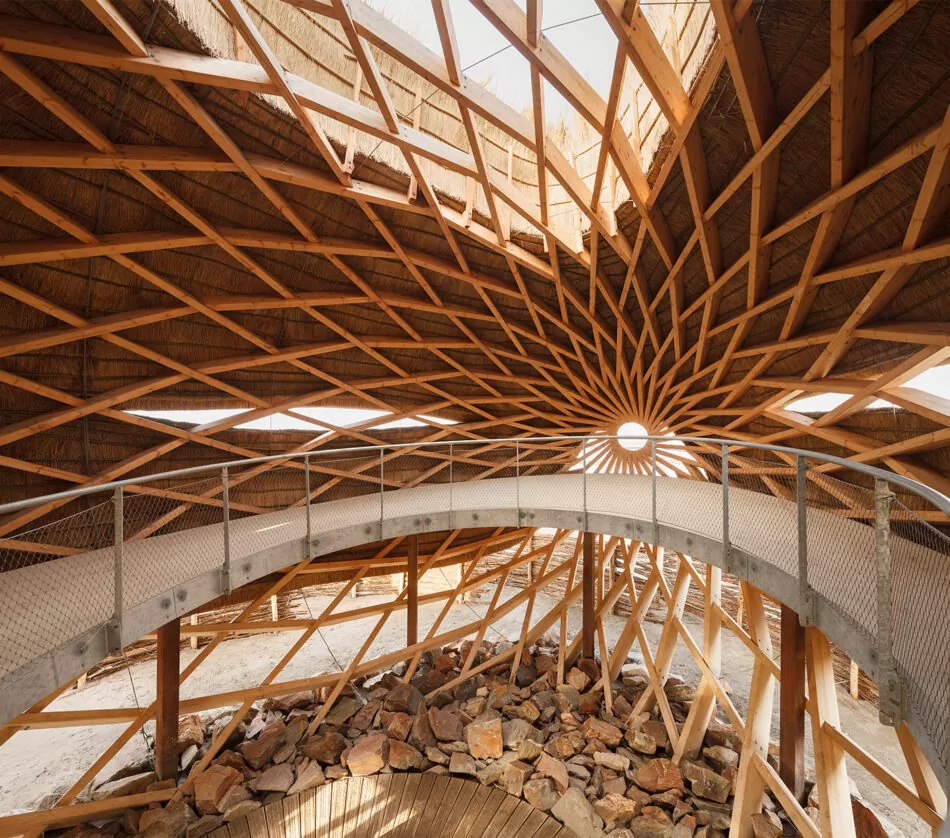At 14 by 9 metres this Accoya frame is clad in unprocessed wood, settling into its environment.
It is a hide for bird watchers. A hidden sanctuary to get back to nature and experience the Haringvliet estuary. Not too difficult to find, it’s lying on the side of a dike a short walk via a sheltered path.
Accoya makes up the lower section of the egg. As the area is prone to flooding Accoya will save the egg from the rot and damp that may otherwise affect it. With the top sections above the waterline made from spruce. The egg uses a combination of dowels, glue and wood bearing bolts to hold it all together. Thousands of spruce dowels connecting the beams will absorb moisture. Expanding and providing more rigidity to the structure over time.
The Accoya wooden beams range from 1.70 metres to 2 metres, 12cm wide and 27cm to 30cm high. The hide has an elevated concrete floor, at 2.5m visitors have a great vantage point for bird spotting.
The egg is the brainchild of RO & AD, the architects behind many Dutch projects including the Moses Bridge and the Ravelijn Bridge. Ad Kil, co-owner commented “We always choose Accoya because we are big fans of the wood. Accoya is made of a fast-growing type of wood and also has durability class 1. The Accoya wood can be used outdoors without any problems. And the wood looks nice of course.”












